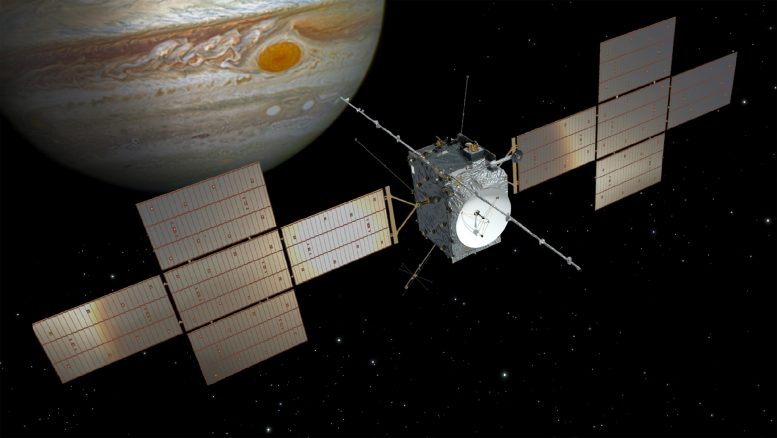
Illustration of the JUICE spacecraft at Jupiter. The spacecraft has successfully deployed its 10.6-meter-long magnetometer boom (J-MAG), about 1.7 million kilometers from Earth, which started collecting magnetic field data immediately. The preliminary data indicates successful deployment, with two sensors on the boom measuring the ambient solar wind field. Credit: ESA
ESA’s Jupiter Icy Moons Explorer (Juice) has successfully deployed its magnetometer boom (J-MAG), now actively collecting magnetic field data. The initial data suggests a successful deployment with the instrument soon to enter a more detailed commissioning phase. J-MAG will contribute to the study of Jupiter’s magnetic field and its icy moons once Juice reaches Jupiter in 2031.
ESA’s Jupiter Icy Moons Explorer, Juice, has recorded magnetic field data as its 10.6 m-long magnetometer boom deployed.
Juice launched on April 14, with deployments and activation of its antennas, booms, sensors, and instruments ongoing over the next months in a dedicated check-out period known as the commissioning phase.
The Juice magnetometer boom (J-MAG) was deployed on April 21, when Juice was about 1.7 million km from Earth.
Data collected by J-MAG captured the moment of deployment itself.
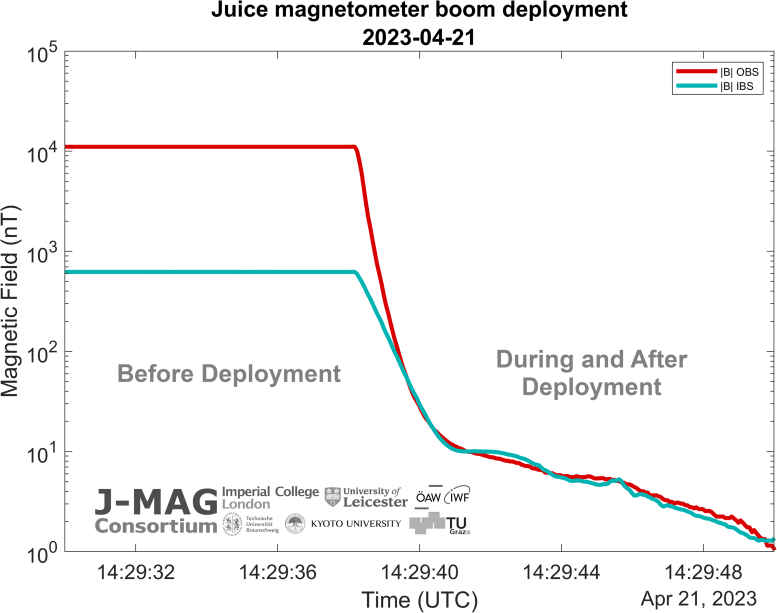
This plot shows the magnitude of the magnetic field from two sensors, as indicated by the red and turquoise lines, before (flat line) and during the deployment (curving lines). The two sensors are mounted on the outer segment of the boom and separated by about 3 m. The labels OBS and IBS indicate the data from the outboard (OBS) and inboard sensors (IBS), respectively. OBS is mounted close to the end of the 10.6 m boom. Credit: ESA/Juice/J-MAG Consortium
The plot shows the magnitude of the magnetic field from two sensors, as indicated by the red and turquoise lines, before (flat line) and during the deployment (curving lines). The two sensors are mounted on the outer segment of the boom and separated by about 3 m. The labels OBS and IBS indicate the data from the outboard (OBS) and inboard sensors (IBS), respectively. OBS is mounted close to the end of the 10.6 m boom.
The left side of the plot shows the field trace before the boom deployment. The sensors are up against the side of the spacecraft and OBS is located close to two spacecraft thrusters, which are quite magnetic, explaining the difference in the two field magnitudes.
The plot lines change as the boom deployment occurs, starting just after 14:29:38 UT and taking approximately two seconds.
Thereafter, the two field magnitudes are at a similar level, trending towards zero and stable, indicating that the boom has deployed the full 10.6 m and both sensors are measuring the ambient solar wind field.
The plot has been put together using very preliminary calibrations. Detailed instrument commissioning will start next week, including operation in its more sensitive ranges. It will also see the first switch-on of the third J-MAG sensor that will measure the magnetic field magnitude.
Once in the Jupiter system in 2031, J-MAG will help characterize the planet’s magnetic field and its interaction with that of giant moon Ganymede and will study the subsurface oceans of the icy moons. J-MAG is one of ten instruments that will examine Jupiter and its largest ocean-bearing moons Ganymede, Europa, and Callisto.
With the critical deployment of the solar arrays and the medium gain antenna following launch, the next three months will focus on deploying and checking out the instruments.
About Juice
The European Space Agency’s Juice is humanity’s next bold mission to the outer Solar System. After traversing space for eight years to reach Jupiter, it will conduct thorough examinations of the colossal gas planet and its trio of large, ocean-bearing moons: Ganymede, Callisto, and Europa. This enterprising mission aims to delineate these moons using an array of remote sensing, geophysical, and in situ instruments, enhancing our understanding of these intriguing locations as potential abodes for past or current life. Juice will deeply analyze Jupiter’s multifaceted magnetic, radiation, and plasma environment and its interaction with the moons, scrutinizing the Jupiter system as a prototype for gas giant systems scattered across the cosmos.

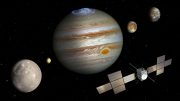
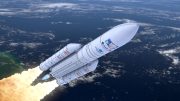

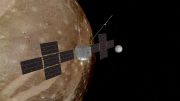
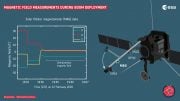
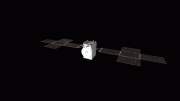
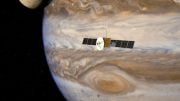
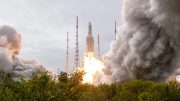
Be the first to comment on "ESA’s Jupiter Icy Moons Explorer: Juice’s First Sip of Science From Space"